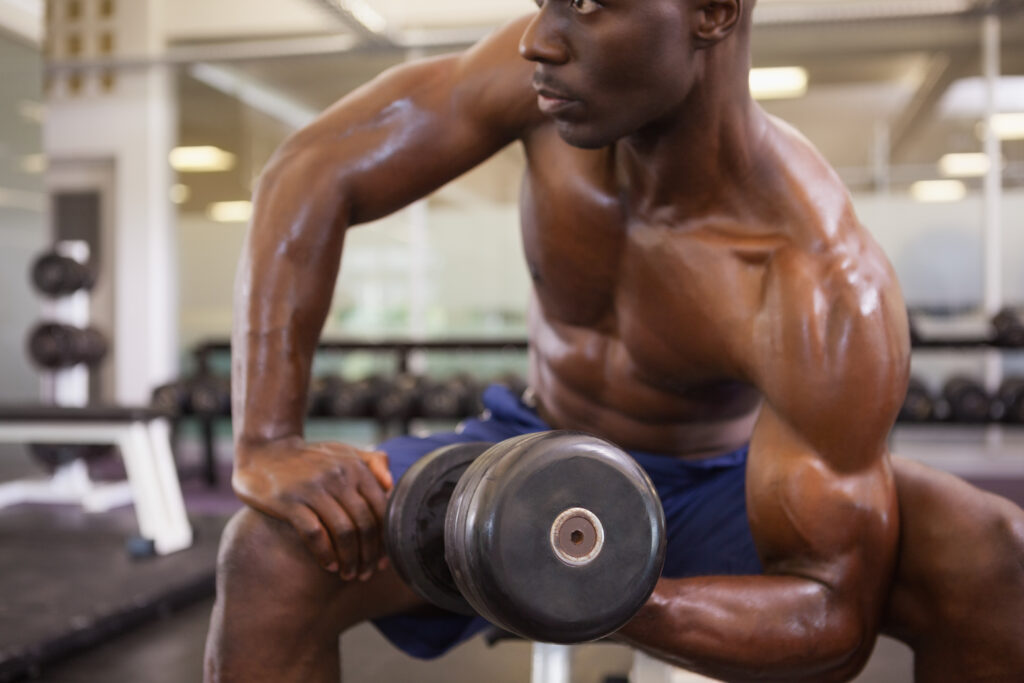Introduction
When stepping into the gym, it’s crucial to define your goals: Are you training for maximum strength or muscle hypertrophy (size)? While both involve resistance training, their programming differs significantly in terms of repetition ranges, volume, rest periods, and training intensity. Understanding these differences will help you structure your training for optimal results. Let’s explore the science behind each approach and determine the best strategy for your goals.
The Fundamental Differences Between Strength & Hypertrophy
Strength training focuses on enhancing the ability to exert force against resistance. In contrast, hypertrophy training emphasizes muscle growth, increasing the size of individual muscle fibers through metabolic and mechanical stress.
1. Rep Ranges and Volume: Low vs. Moderate Repetitions
- Strength Training: Typically involves low reps (1-6 per set) with high loads (80-100% of 1RM). The focus is on maximal force output, recruiting more motor units for peak strength gains.
- Hypertrophy Training: Uses a moderate rep range (6-12 per set) with moderate-to-heavy loads (65-80% of 1RM). This range optimally stimulates muscle growth by maximizing time under tension (TUT) and metabolic stress.
Scientific research supports these rep ranges. A study published in the Journal of Strength and Conditioning Research found that lower rep, high-load training improved neural adaptations, while moderate reps increased muscle cross-sectional area, leading to hypertrophy.
2. Training Volume: Sets Per Muscle Group
- Strength Training: Requires lower total volume (3-5 sets per exercise) because of the high intensity. The focus is on quality over quantity to prevent neuromuscular fatigue.
- Hypertrophy Training: Involves higher volume (10-20 sets per muscle group per week) to create sufficient mechanical tension and muscle damage for growth.
3. Rest Periods: Short vs. Long Recovery Times
- Strength Training: Longer rest periods (2-5 minutes between sets) are necessary to allow for full recovery of the central nervous system (CNS) and maximize force output in subsequent sets.
- Hypertrophy Training: Uses shorter rest periods (30-90 seconds) to maintain muscle fatigue, increase metabolic stress, and stimulate greater growth hormone (GH) release.
A 2016 study from The Journal of Applied Physiology confirmed that shorter rest periods (under 90 seconds) led to greater muscle protein synthesis, crucial for hypertrophy, while longer rest was superior for strength performance.
4. Training Intensity and Load Management
- Strength Training: Focuses on lifting near maximal loads (85-100% of 1RM), requiring longer recovery both between sets and sessions.
- Hypertrophy Training: Works in a slightly lower intensity range (65-80% of 1RM), balancing mechanical tension with sufficient volume to maximize muscle fiber recruitment.
5. Muscle Fiber Recruitment: Type I vs. Type II Dominance
- Strength Training: Primarily recruits Type II (fast-twitch) muscle fibers, which generate high force but fatigue quickly.
- Hypertrophy Training: Engages both Type I and Type II fibers, with a greater emphasis on maximizing Type II fiber growth, as they have the most potential for hypertrophy.
EMG (electromyography) studies confirm that heavy loads and explosive movements activate more Type II fibers, which explains why powerlifters excel at raw strength.

Which Training Style is Best for You?
Choose Strength Training if You
- Want to increase maximal strength for sports, powerlifting, or Olympic lifting.
- Prefer lower reps, heavier weights, and longer rest periods.
- Are focused on neuromuscular adaptations rather than muscle size.
Choose Hypertrophy Training if You
- Aim to build a bigger, more muscular physique.
- Prefer moderate reps, high volume, and shorter rest periods.
- Want to enhance muscle aesthetics and size without prioritizing maximal strength.
Can You Train for Both Strength and Hypertrophy?
Yes! Many athletes use a hybrid approach, cycling between strength-focused and hypertrophy-focused phases or integrating both within the same program. For example:
- Strength-focused days: Low reps, heavy weight (e.g., 3-6 reps at 85-90% 1RM).
- Hypertrophy days: Moderate reps, moderate weight (e.g., 8-12 reps at 65-75% 1RM).
A study in Sports Medicine found that combining strength and hypertrophy training yields the best results for well-rounded fitness and athletic performance.
Final Thoughts
Both strength training and hypertrophy training offer unique benefits, and your choice should depend on your specific goals. If you want to maximize strength, prioritize low reps, high load, and long rest periods. If your goal is muscle growth, focus on moderate reps, higher volume, and shorter rest intervals.
Whichever method you choose, ensure progressive overload, proper recovery, and a well-structured training program to achieve optimal results.
We are always interested in hearing about what your training goal are? Share your thoughts in the comments below or add them in the Q&A section on Jefit app.
Jefit: Discipline Drives Greatness in the Gym
If you’re serious about building muscle, tracking workouts, and reaching your fitness goals in 2025, the Jefit strength training app is the perfect tool to help you succeed. With over 20 million downloads and 12+ million users, Jefit is one of the best tracking apps for strength training. Recognized as the Best Fitness App of 2024 and featured in Men’s Health, PC Magazine, and USA TODAY, Jefit stands out with its user-friendly design, advanced workout tracking, and over 42,000 five-star ratings. Whether your goal is to gain strength, track progress, or optimize protein intake, Jefit has everything you need.
- Boost Your Posterior Strength with 3 Effective Jefit Exercises - March 31, 2025
- 8 Underrated Stretches to Improve Your Deadlift Performance - March 28, 2025
- Strength vs. Hypertrophy: Best Way to Train for Your Goals - March 26, 2025
